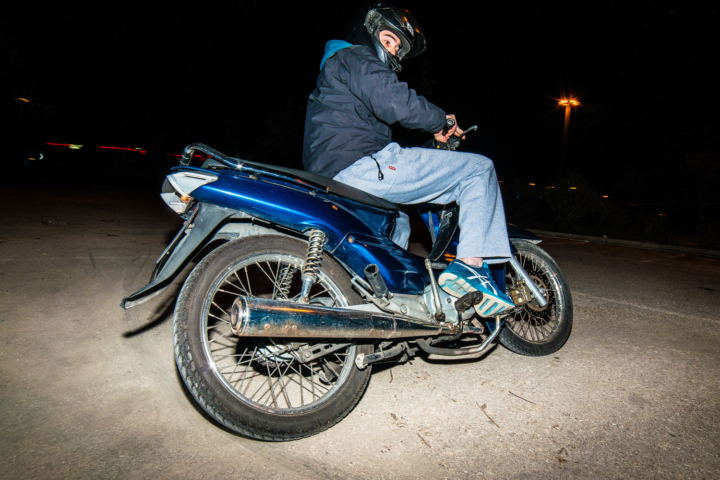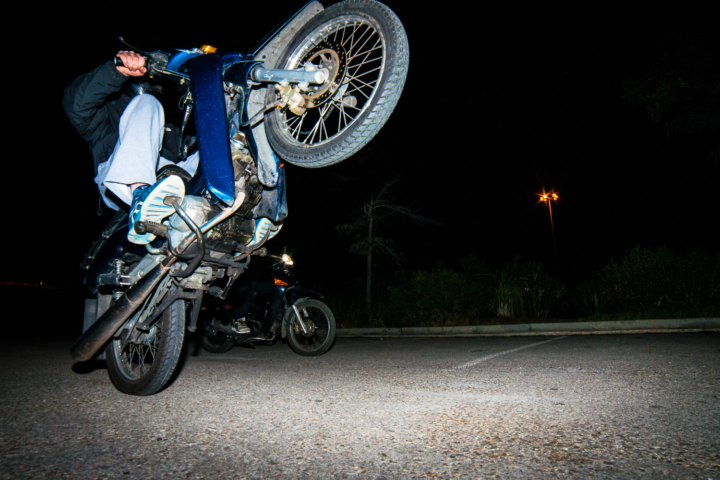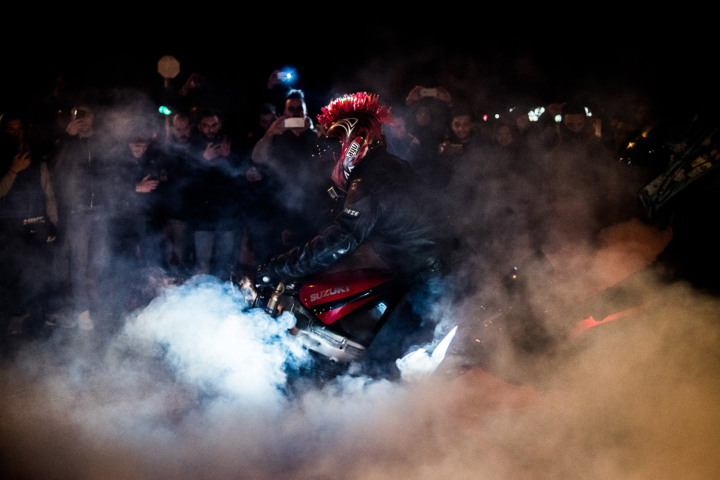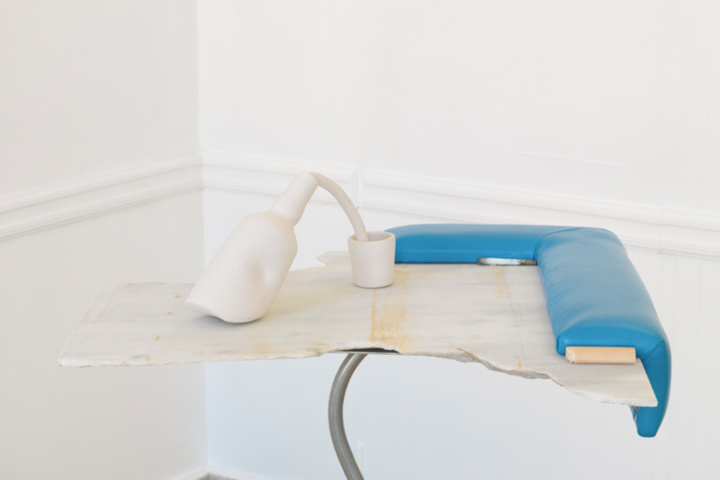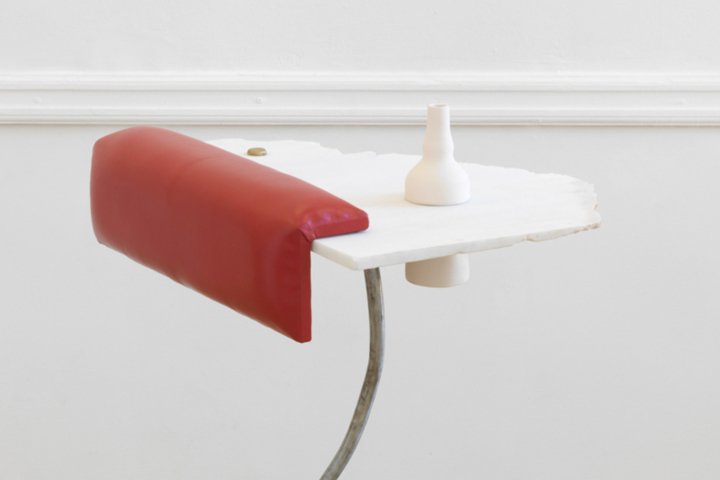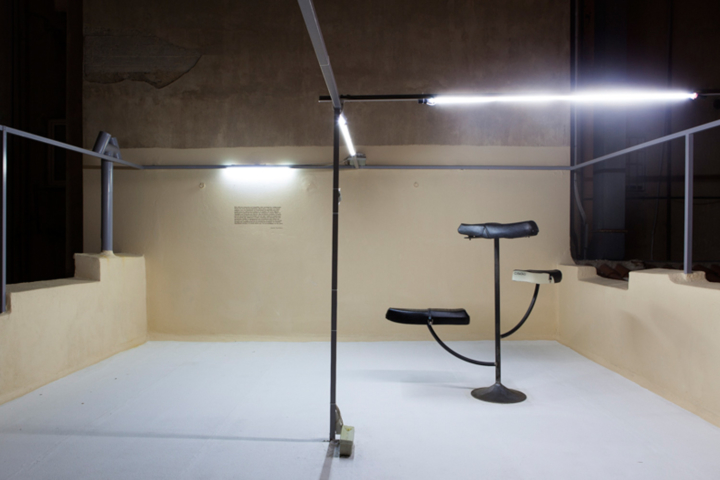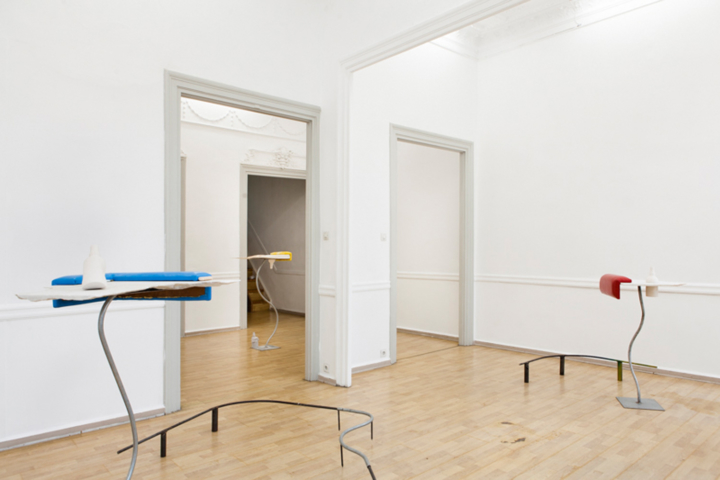Vasilis Papageorgiou’s latest project is the result of free associations and personal research around various aspects of urban leisure time and subculture. By personifying and renegotiating the fundamental aesthetics of objects associated with late-night bar culture on the outskirts of Athens, the artist achieves a balance between fiction and reality, illusion and illustration.
“When the Sun Goes Up: Bar Stories in 3 Acts” at Hot Wheels Projects is the largest survey of this body of work to date, and is thematically structured around the latest and earliest hours of the day: the so-called “lock in.” In its initial presentation at the sixth Moscow International Biennale for Young Art, the work felt like a theater set, defined by a dramatic light installation that either overexposed or completely obscured each sculpture. At Hot Wheels Projects, the physical components of the installation are the focus of the collective experience. Lighting theatrics are put aside, and the viewer can clearly see Papageorgiou’s steel, marble, and leather deconstructions of bar accouterments, including footrests, stools, bottles, and billiard lights. Texts commissioned by the artist are pasted on the walls. As the title suggests, the exhibition is conceived in three acts, with sculptures scattered across the various rooms of this typically neoclassical Greek apartment, each functioning interchangeably to create a strong internal rhythm and overarching narrative.
“Where were you when the Berlin Wall fell? Where were you on 9/11?” asks Amitav Ghosh in The Great Derangement, questioning our associations between times and places, and our ability to measure ourselves against far greater shifts in geological epochs. “Will it ever be possible to ask,” he continues, “in the same vein, ‘Where were you at 400ppm?’ or ‘Where were you when the Larsen B ice shelf broke up?’”
It’s 6:30 p.m. on August 30, 2008. Atmospheric CO2 is 382ppm and it is six years and seven months since Larsen B calved. I sit on a wooden picnic bench above a black sand beach in Ilulissat, a town of some five thousand souls on the west coast of Greenland, 350 kilometers above the Arctic Circle. The sun will not set for many hours, and then barely. I am drinking a tumbler of Balvenie DoubleWood, and the jagged lump of ice that floats in it, which I have hacked from a beached iceberg, is fizzing.
The ice in my glass is far more ancient than that of the Larsen shelf, which, renewed each year, is at depth only a few hundred years old. My ice comes from the heart of the Greenland ice sheet and was laid down some fifteen thousand years ago, before flowing down Sermeq Kujalleq, the Jakobshavn Glacier, to the sea. Upstream, the ice does not harden due to the cold; rather, as new snow falls it presses down on the layers beneath it, compressing them into ice and trapping millions of air bubbles within its structure. This accounts for the stunning blue color of glacial ice and the fact that it fizzes when it melts.
The air released from this ice, hissing now through the malted waters of the Robbie Dhu springs, has been trapped underground for fifteen thousand years, since the end of the last ice age. It contains a mere 150 parts per million CO2: a different air, entirely, to the one we breathe today. The water that with mixes my drink comes from the deep past, from another time, and as it swirls and frets with new life, I drink it down.
— “On the Rocks,” a text by James Bridle, commissioned for the exhibition “When the Sun Goes Up: Bar Stories in 3 Acts”
As viewers piece together their own story via scenes left in a state of tingling inertia, two absent protagonists emerge: one who might have just abruptly left the bar, and the other a lone drifter. Each speculative action resists a social norm, and within the negated microcosm of the Solo Bars (2018) — with their forgotten marble lighters, molded bronze beer caps, and metal cigarettes — the artist’s treatment causes banal realities to come across as a film on pause.
The sleek curves of Footrest 1–3 (2018), combined with the show’s textural variety and almost mystagogic interpretation of events, creates an autonomously cerebral connection between the sculptures and the viewer — a sense of choreography or a feeling that one cannot entirely justify. We are walking in someone else’s shoes, but, oddly enough, they seem to fit quite well.

